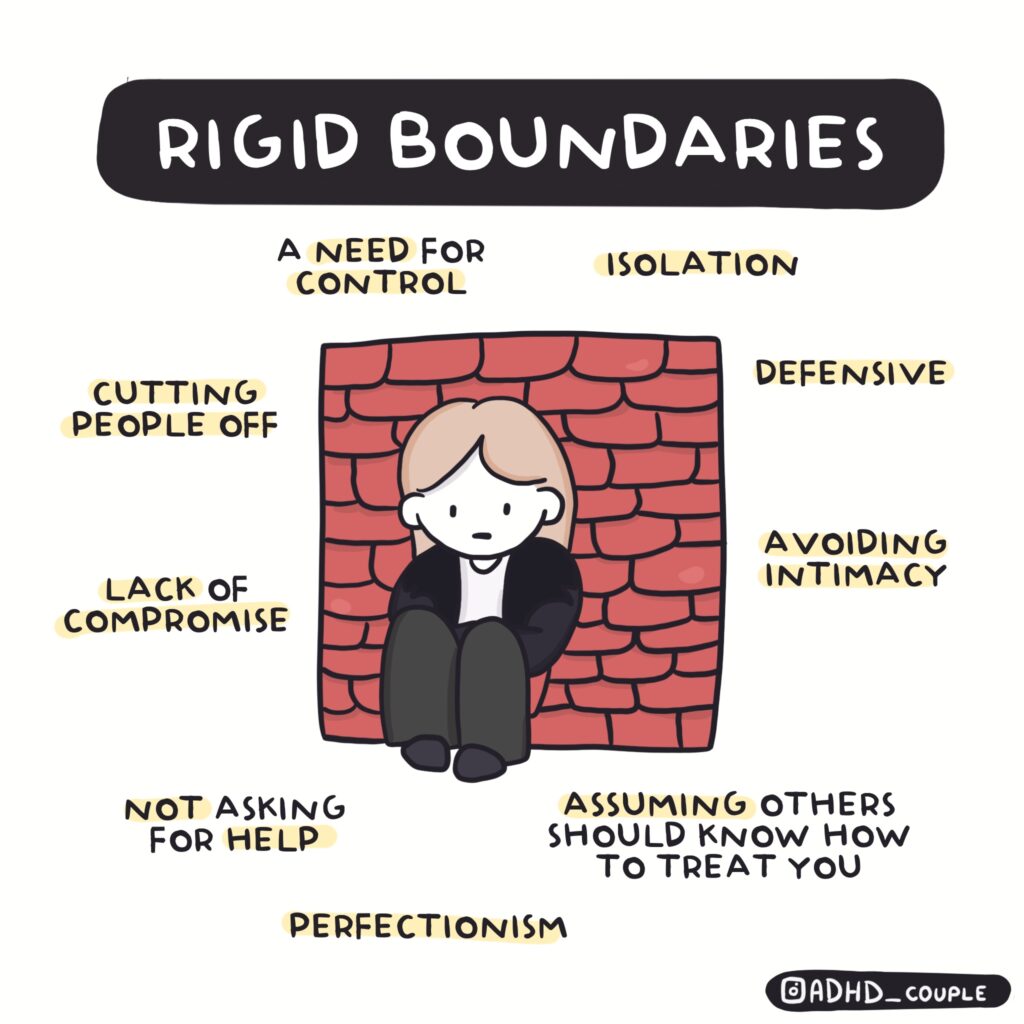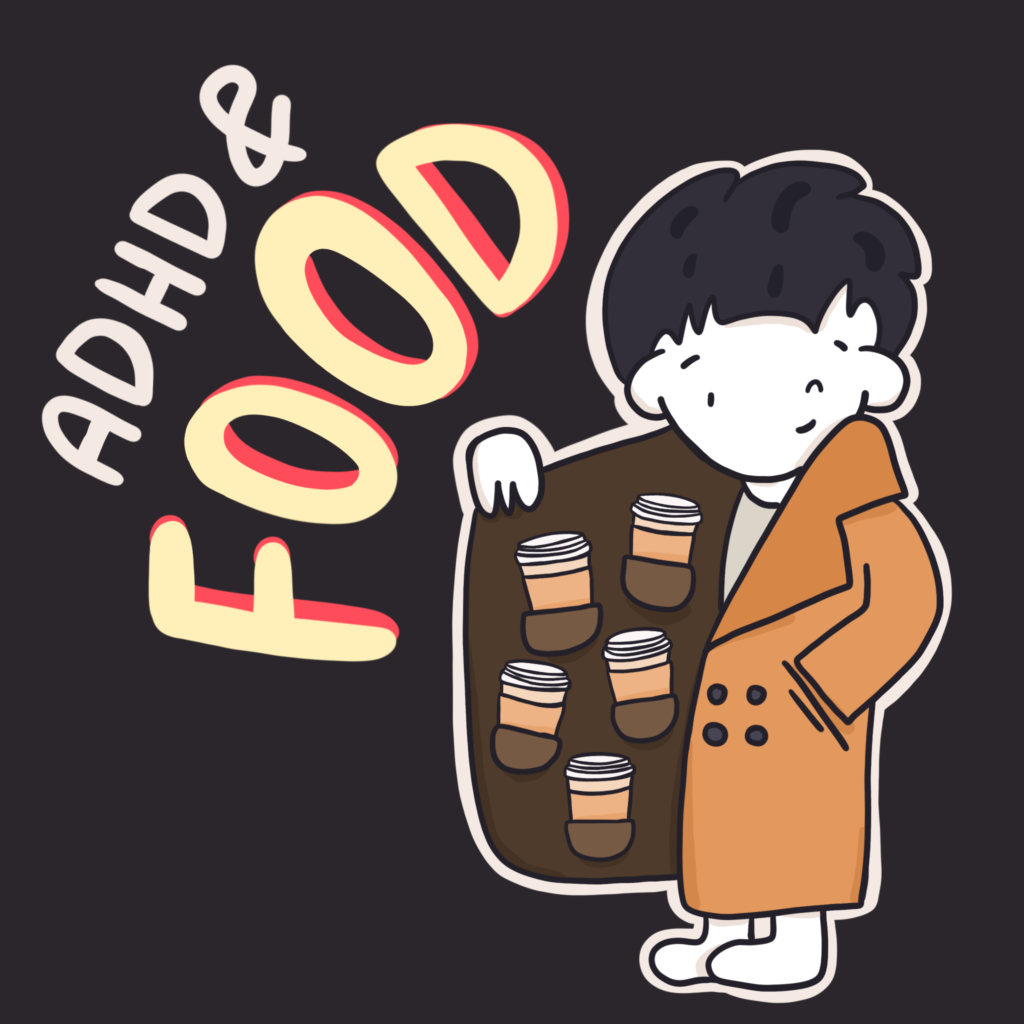What is a boundary?
A boundary is a personal limit that defines how others can behave towards us. Setting and enforcing boundaries can be difficult for many ADHD’ers but it is a crucial part of self-care and self-respect. These personal limits can take various forms, such as physical, emotional, monetary, intellectual, or spiritual boundaries, and they can vary depending on the context and the person involved.


Healthy relationships
Boundaries are important for maintaining healthy relationships, as they enable us to communicate our needs and expectations to others, while also respecting the needs and expectations of those around us.
Rigid boundaries
A type of personal boundary that is overly strict and inflexible, often to the point of being unresponsive to the needs of others.
ADHD’ers with rigid boundaries may be very protective of their personal space, time, and emotions, and may have difficulty trusting others or forming close relationships.
They often avoid difficult conversations, and isolate themselves in order to control the outcome of the situation. While having boundaries is important, rigid boundaries can limit personal growth and can make it difficult to build healthy relationships with others.


Porous boundaries
A type of personal boundary that is overly flexible or undefined, making it difficult for individuals to maintain a clear sense of self and to establish healthy relationships with others.
ADHD’ers with porous boundaries may have a tendency to take on the emotions, thoughts, and behaviors of others, often to the point of neglecting their own needs and desires.
They may also have difficulty saying no to others and feel guilty or anxious when they do. As a result, ADHD’ers with porous boundaries may be vulnerable to manipulation, exploitation, or abuse by others.
Healthy boundaries
A type of personal boundary that is clear, firm, and flexible enough to protect one’s well-being while also allowing for meaningful and authentic relationships with others.
People with healthy boundaries are able to communicate their needs and expectations effectively while also respecting the needs and expectations of others. Individuals with healthy boundaries have a strong sense of self and a clear understanding of their own values, beliefs, and priorities.
They are able to set limits and say no when necessary without feeling guilty or anxious, as well as take responsibility for their own thoughts, feelings, and behaviors.


HOW TO SET BOUNDARIES
When setting boundaries, it can be helpful to follow the three-step process of acknowledging, explaining, and offering alternatives.
Acknowledging involves recognizing and validating your own feelings, needs, and limits. This can involve tuning into your own emotions and physical sensations, and recognizing when you feel uncomfortable, overwhelmed, or disrespected.
Explain it to others. This can involve communicating your limits and expectations clearly and assertively, while also being respectful and considerate of the other person’s feelings and needs. It may be helpful to use “I” statements, such as “I feel uncomfortable when…” or “I need to have some space because…”.
Finally, it is important to offer alternatives or solutions that can help both parties feel heard and respected. This can involve brainstorming together to find a compromise that works for everyone, or offering an alternative activity or solution that meets both parties’ needs.







